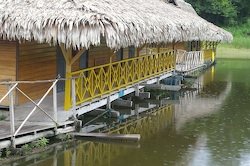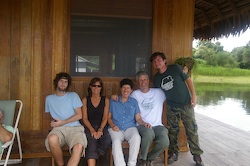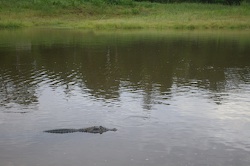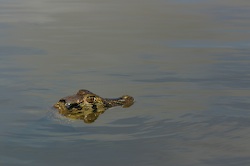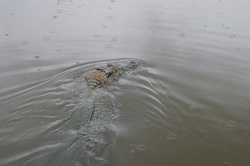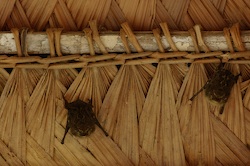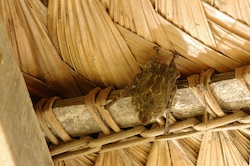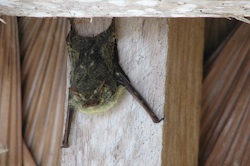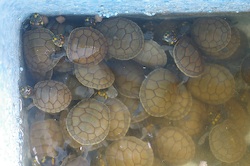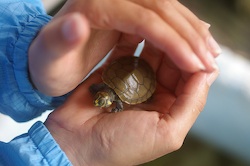|
UAKARI LODGE Uakari Lodge is organized by the Mamirauá Institute (a non-governmental organization) and staffed by local villagers. All profits are divided among the villages in the reserve. Since the water level rises by 10 to 12 meters seasonally, all buildings in the area are either made to float up and down with the water, or constructed on platforms and stilts tall enough to stay above the high-water mark. Uakari Lodge was built with the former approach, floating on the river. On the day we arrived, we were the only guests at the lodge. The following day, two others joined us for the remaining three days of our visit. Pictured here are Andy from London, Mary from Portland (Oregon), Monica, me, and Carlos, our guide from the Mamirauá Institute. Since the lodge is on the water rather than on the shore, the only way to leave it is via boat. Each day we'd go on two or three outings. In between, we would nap in hammocks, read, eat, and look for wildlife from or in some cases on the floating lodge. The most conspicuous wildlife was probably the large population of Black Caimans (Melanosuchus niger) drifting about. The thatched eaves of the lodge buildings were home to many Long-nosed Bats (Rhynchonycteris naso). At dusk, and random other times of day, they would zoom around the lodge at about head level, helpfully clearing away some percentage of the mosquitos and other insects. River turtle eggs are considered a delicacy to many local people in the Amazon basin. To help conserve the turtles, people working for the Mamirauá Institute dig up turtle eggs each year from beaches in less-protected areas and incubate them in an outdoor sandbox close to Uakari Lodge. The hatchling turtles are raised for about a month, then released back into the river near the beach from which the eggs were taken. We got to see a large styrofoam cooler full of oh-so-cute baby Yellow-spotted Amazon River Turtles (Podocnemis unifilis). |

